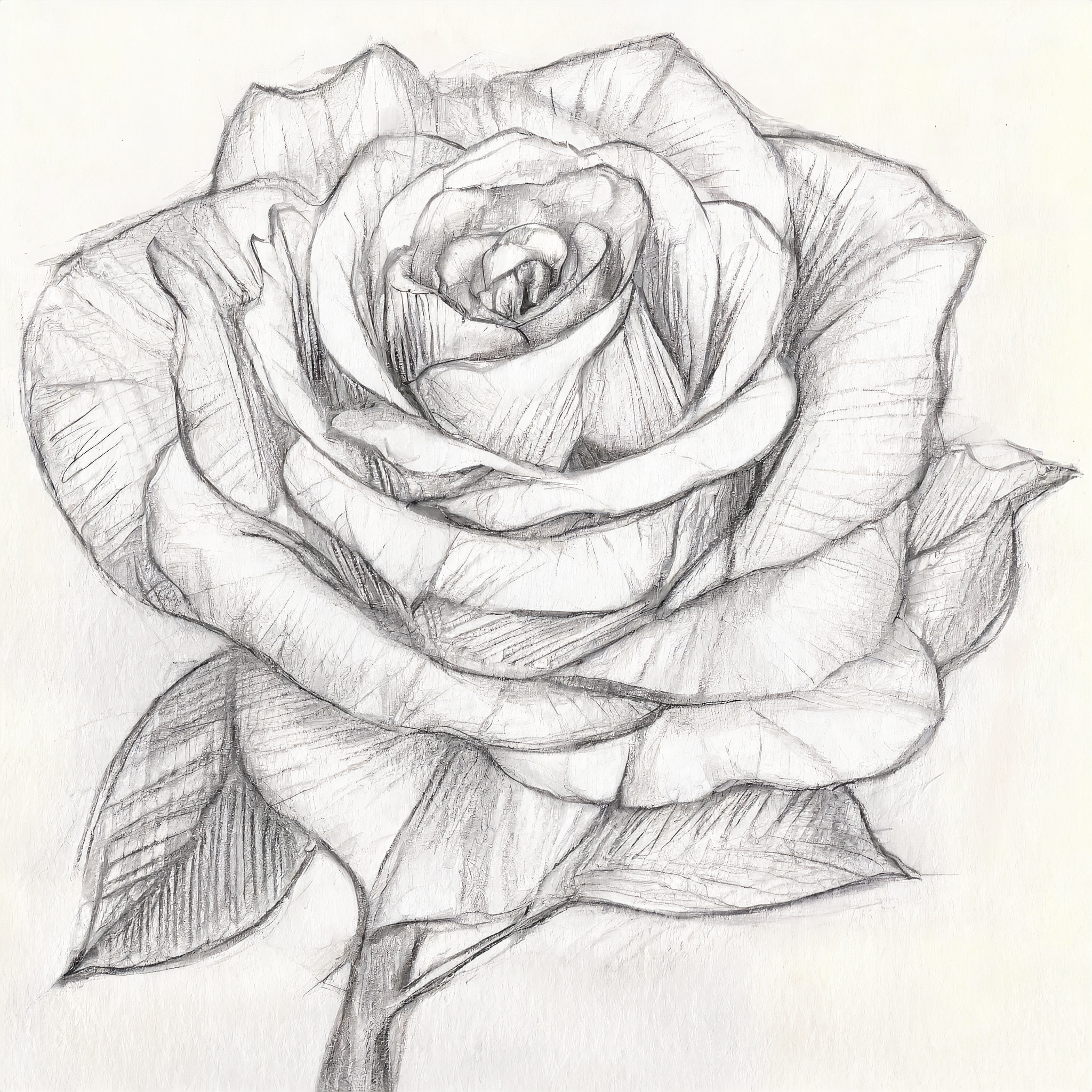Ever wished you could capture the delicate beauty of a rose on paper?With a few simple techniques, anyone can learn to draw this iconic flower, regardless of their artistic background. From budding beginners to seasoned sketchers, the journey to mastering the art of rose drawing is an exploration of shapes, shadows, and the subtle nuances that bring this timeless bloom to life.
The allure of the rose lies in its intricate layers and seemingly complex structure. But fear not, aspiring artists! This guide demystifies the process, breaking it down into manageable steps, starting with the most basic shapes and gradually building towards a realistic representation. Whether you prefer the simplicity of a pencil sketch or the vibrant hues of colored pencils, the path to creating stunning rose drawings awaits. Let's embark on this creative journey together, transforming simple lines into exquisite floral masterpieces.
| Aspect | Description |
|---|---|
| Subject | Drawing Roses |
| Skill Level | Beginner to Advanced |
| Materials | Paper, Pencil, Eraser, Pen (optional), Colored Pencils (optional) |
| Techniques | Shading, Layering, Shape Recognition, Observation |
| Reference | YouTube Tutorials on Drawing Roses |
The journey begins with a single, unassuming circle. This humble shape forms the heart of our rose, the foundation upon which its delicate petals will unfurl. Envision this circle as the tightly furled bud, holding the promise of the blossom to come.
Read also:Letoya Luckett Marries Taleo Coles In Lavish Ceremony
Around this central core, we introduce the first layer of petals. These initial petals, smaller and tighter, hug the circle, hinting at the rose's inner complexity. Using gentle, curved lines, we sketch these petals, overlapping them slightly to create a sense of depth and dimension. Already, the rose begins to take shape, emerging from the simple circle.
As we progress outwards, the petals become larger, more expressive, and more defined. Each stroke of the pencil adds to the rose's unfolding narrative, capturing the gentle curve of a petal's edge, the delicate shadow beneath its fold. Observe how the petals interact with each other, some overlapping, others slightly parted, creating a dynamic interplay of light and shadow.
A key element in achieving realism lies in understanding the subtle nuances of shading. By carefully observing the way light falls upon a real rose, we can replicate these effects in our drawing. Darker shades define the areas where petals overlap or curve inwards, while lighter shades bring forth the highlights, giving the rose a three-dimensional form.
For those seeking a more detailed approach, a pen can be used to refine the pencil sketch, adding crispness and definition to the outlines. This step is particularly effective for creating a more dramatic, stylized rose. The pen can also be used to add intricate details, such as delicate veins or subtle texture to the petals.
The addition of color elevates the rose drawing to a new level of artistry. Colored pencils, with their rich pigments and subtle blending capabilities, are an excellent choice for adding vibrancy and depth to the rose. Experiment with different shades of red, pink, or even yellow to capture the unique character of your rose.
Beyond the basic techniques, the true magic of rose drawing lies in experimentation and practice. Don't be afraid to explore different styles, techniques, and perspectives. Each attempt brings you closer to mastering this beautiful art form.
Read also:Onlyfans Revolutionizing Creator Fan Connections
From simple outlines to intricate details, the process of drawing a rose is a journey of discovery. Embrace the imperfections, celebrate the small victories, and allow your creativity to blossom alongside your rose drawings.
Remember the initial frustration of tackling this seemingly complex flower? With each step, the process becomes clearer, the lines more confident. The rose, once a daunting challenge, transforms into a testament to the power of patience and practice. So, pick up your pencil, embrace the challenge, and let your artistic journey unfold, one petal at a time.
Consider experimenting with different types of roses. From the classic Hybrid Tea to the delicate Floribunda, each variety boasts unique characteristics, offering endless inspiration for your artistic endeavors. Explore the world of roses, observe their diverse forms, and let your drawings reflect the beauty and variety found within this captivating family of flowers.
And there you have it, the secrets to drawing a rose unveiled. With practice and a touch of creativity, youll be crafting stunning floral masterpieces in no time. So, grab your pencils, unleash your inner artist, and let the petals unfold on your canvas.

